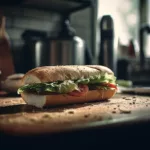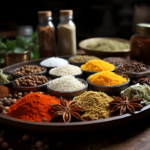Table of Contents
Are you tired of struggling with dull knives in the kitchen? A sharp knife is essential for any home cook or professional chef, but keeping your knives sharp can be a challenge. That’s where a knife sharpener comes in. With the help of a knife sharpener, you can maintain the sharpness of your knives and extend their lifespan.
In this article, we’ll provide you with the ultimate guide to knife sharpeners. We’ll cover the benefits of using a knife sharpener, the different types of sharpeners available, and how to use them. By the end of this guide, you’ll have all the information you need to keep your knives razor sharp and perform your culinary tasks with ease. So, let’s dive in and explore the world of knife sharpeners!
Why Use a Knife Sharpener?
A dull knife can make even the simplest kitchen tasks frustrating and time-consuming. This is why using a knife sharpener is crucial in maintaining the quality and longevity of your knives. Here are some reasons why you should consider using a knife sharpener:
Increased Safety
A dull knife is actually more dangerous than a sharp one. When you use a dull knife, you need to apply more pressure to cut through food, which increases the risk of slipping and injury. With a sharp knife, you can make clean, precise cuts and reduce the risk of injury.
Better Performance
A sharp knife performs better and makes food preparation more efficient and enjoyable. A dull knife can crush and tear food, leading to uneven cooking and an unappetizing presentation. With a sharp knife, you can achieve even slices, julienne vegetables with ease, and chop herbs like a pro.
Extended Lifespan
Regular sharpening helps to extend the lifespan of your knives, saving you money in the long run. When a knife is dull, you need to apply more pressure to cut through food, which can damage the blade over time. With regular sharpening, you can keep your knives in top condition and prevent them from becoming damaged or worn out.
Maintains Quality
A knife sharpener helps to maintain the quality of your knives. When a knife is dull, it can become chipped or nicked, which can affect its performance and make it more difficult to sharpen. By keeping your knives sharp, you can prevent damage and ensure that they continue to perform at their best.
In summary, using a knife sharpener is a simple and effective way to maintain the quality and performance of your knives. With a sharp knife, you can reduce the risk of injury, improve efficiency in the kitchen, and extend the lifespan of your knives. So, invest in a good knife sharpener today and enjoy the benefits of sharp knives in all your culinary endeavors.
Types of Knife Sharpeners
There are several types of knife sharpeners available on the market, each with its own unique advantages and disadvantages. Here are some of the most common types of knife sharpeners:
Honing Rods
Honing rods, also known as sharpening steels, are long, thin rods made of steel or ceramic. They are used to maintain the sharpness of a knife’s edge between sharpenings. Honing rods don’t actually sharpen the blade; instead, they realign the edge of the blade, which can become misaligned with use.
Pull-Through Sharpeners
Pull-through sharpeners are a popular choice for home cooks. They consist of two abrasive wheels that are angled to sharpen the blade as it is pulled through the sharpener. They are easy to use and require minimal skill, making them a good option for beginners.
Electric Sharpeners
Electric sharpeners are a quick and easy way to sharpen your knives. They use abrasive disks or belts to sharpen the blade, and many models have multiple stages to achieve a finely honed edge. Electric sharpeners are more expensive than pull-through sharpeners, but they are faster and more efficient.
Water Stones
Water stones, also known as whetstones, are a traditional method of sharpening knives. They consist of a flat stone that is lubricated with water, and the blade is sharpened by sliding it across the stone at the correct angle. Water stones require some skill to use effectively, but they provide a superior edge compared to other sharpening methods.
Manual Sharpeners
Manual sharpeners, such as sharpening stones or diamond sharpeners, are a versatile option for sharpening knives. They are available in a variety of shapes and sizes and can be used to sharpen a wide range of blades, including serrated edges. Manual sharpeners require more skill to use than pull-through sharpeners, but they provide more control over the sharpening process.
In conclusion, the type of knife sharpener you choose will depend on your personal preferences, budget, and level of skill. Pull-through sharpeners and electric sharpeners are good options for beginners, while water stones and manual sharpeners provide more precision and control for experienced users. Whatever type of sharpener you choose, maintaining a sharp edge on your knives is essential for safe and efficient food preparation.
How to Use a Knife Sharpener
Knowing how to properly use a knife sharpener is essential for keeping your knives in good condition. Here’s a step-by-step guide to using a knife sharpener:
Choose the Right Sharpener
Select a knife sharpener that is appropriate for the type of knife you want to sharpen. Different types of knives require different sharpening angles, so make sure the sharpener you choose can accommodate the angle you need.
Secure the Sharpener
If you’re using a pull-through or electric sharpener, make sure it is securely mounted to a stable surface before you begin sharpening.
Adjust the Angle
Adjust the angle of the sharpener according to the manufacturer’s instructions. Most pull-through and electric sharpeners have preset angles, while water stones and manual sharpeners require you to hold the knife at the correct angle.
Begin Sharpening
Start at the base of the blade and draw the knife through the sharpener, following the manufacturer’s instructions. Use a consistent amount of pressure and draw the blade through the sharpener in one smooth motion.
Repeat the Process
Repeat the sharpening process several times, using progressively finer grits if you’re using a water stone or manual sharpener. For pull-through and electric sharpeners, follow the manufacturer’s instructions for the number of passes required.
Test the Blade
Once you’ve finished sharpening, test the blade by cutting through a piece of paper or a tomato. If the knife cuts smoothly and cleanly, you’ve successfully sharpened it. If not, repeat the sharpening process until you achieve the desired level of sharpness.
In conclusion, knowing how to use a knife sharpener is an essential skill for any home cook or professional chef. Whether you’re using a pull-through sharpener, an electric sharpener, a water stone, or a manual sharpener, following the manufacturer’s instructions and using a consistent amount of pressure will help you achieve a sharp, efficient blade that makes food prep a breeze.
Conclusion
In conclusion, keeping your knives sharp is an essential part of cooking, whether you’re a home cook or a professional chef. A dull knife can be frustrating to work with and can even be dangerous, as it can slip and cause injury. That’s why having a good knife sharpener on hand is so important.
In this guide, we’ve covered the basics of knife sharpening, including why it’s important, the different types of sharpeners available, and how to use them. By following these tips, you can keep your knives razor sharp and ready for any kitchen task.
Remember, the key to effective knife sharpening is consistency. Whether you’re using a pull-through sharpener, an electric sharpener, a water stone, or a manual sharpener, be sure to follow the manufacturer’s instructions and use a consistent amount of pressure. With a little practice, you’ll soon be sharpening your knives like a pro.
Investing in a good knife sharpener is a smart choice for any home cook or chef. Not only will it save you time and frustration in the kitchen, but it will also help prolong the life of your knives. So, whether you’re chopping vegetables or slicing through a steak, make sure your knives are sharp and ready for action.









